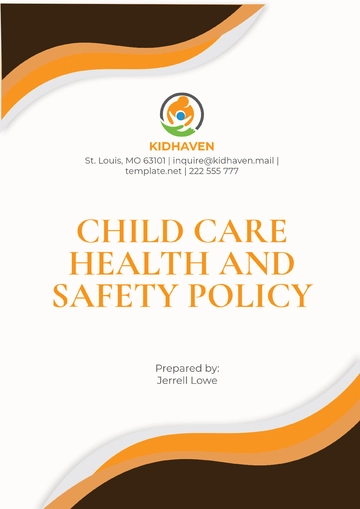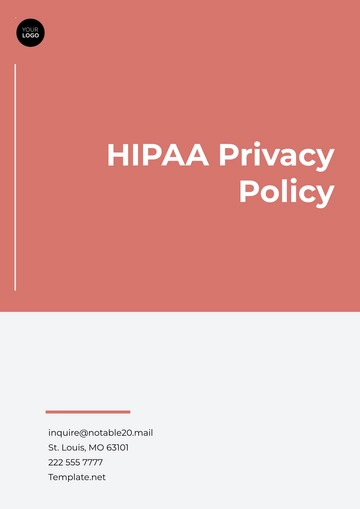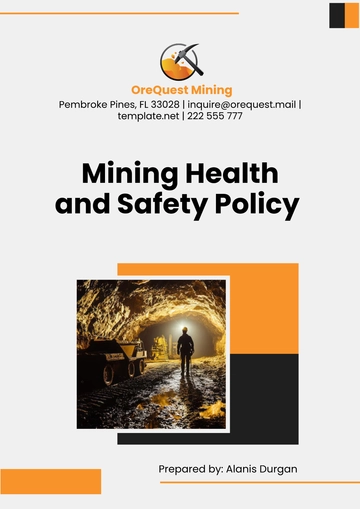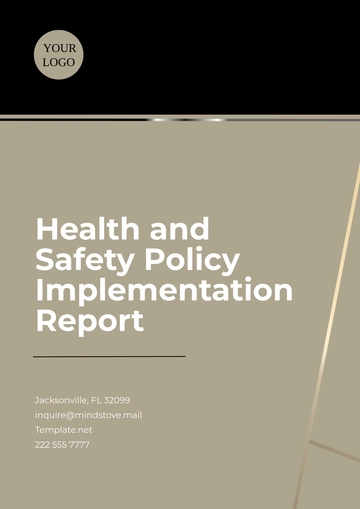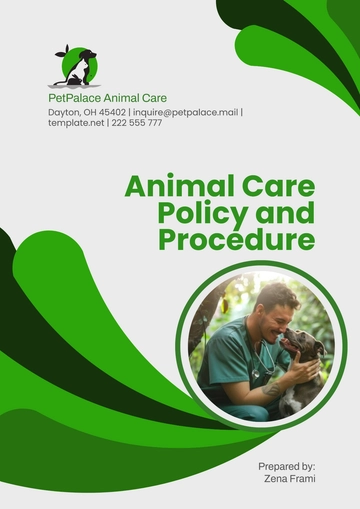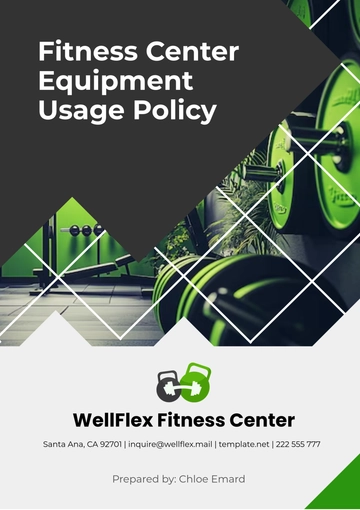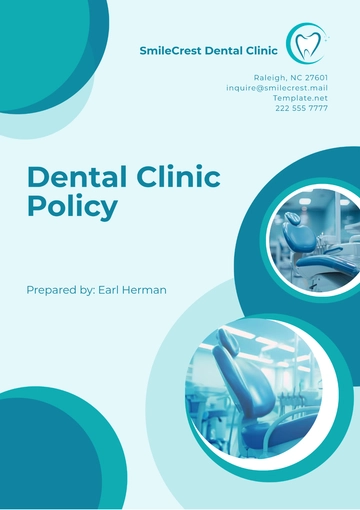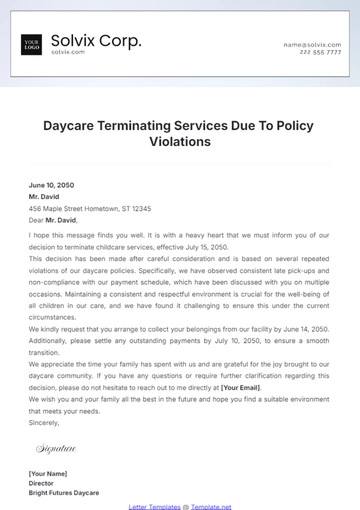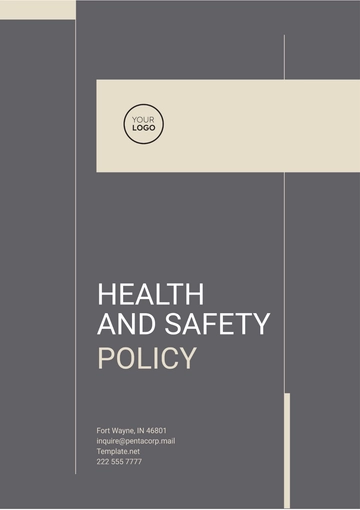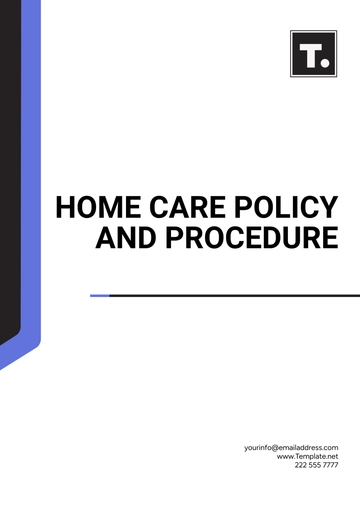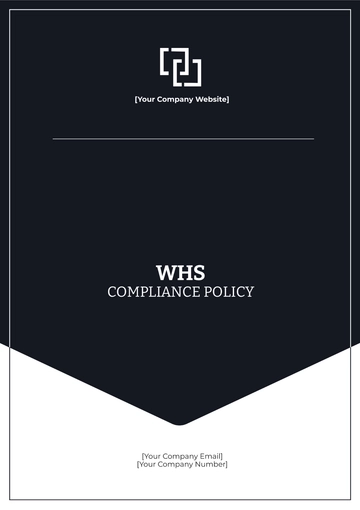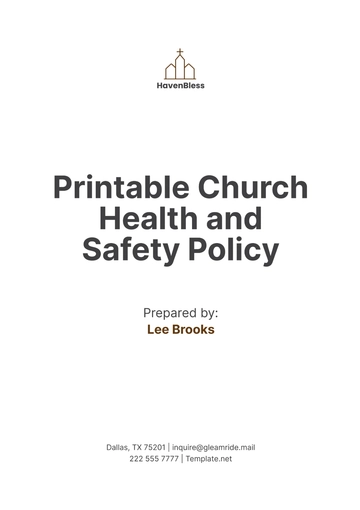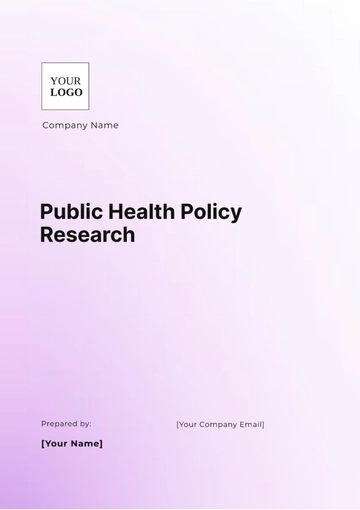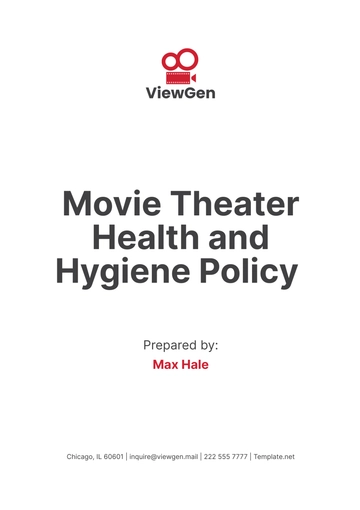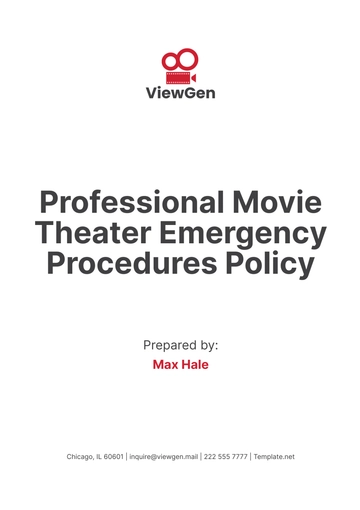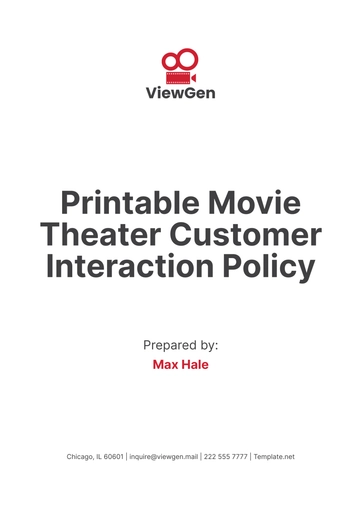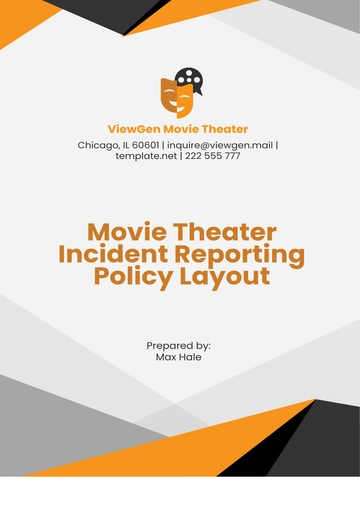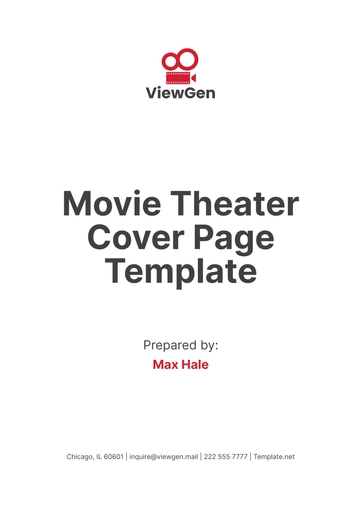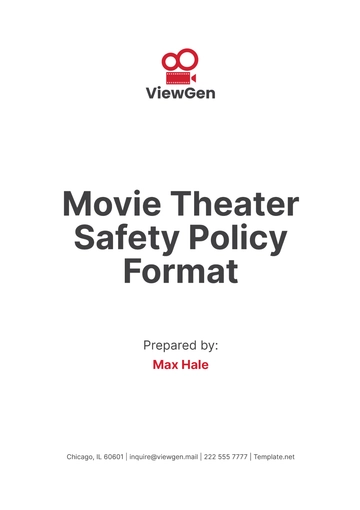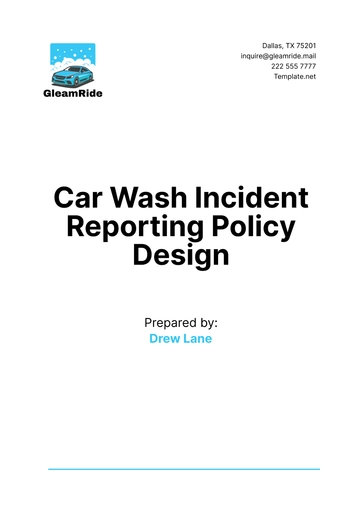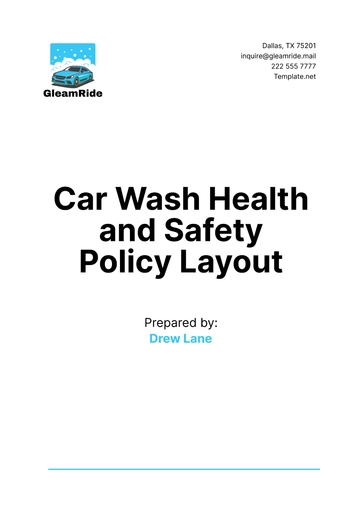Free Nursing Home Quality Assurance Policy & Procedure
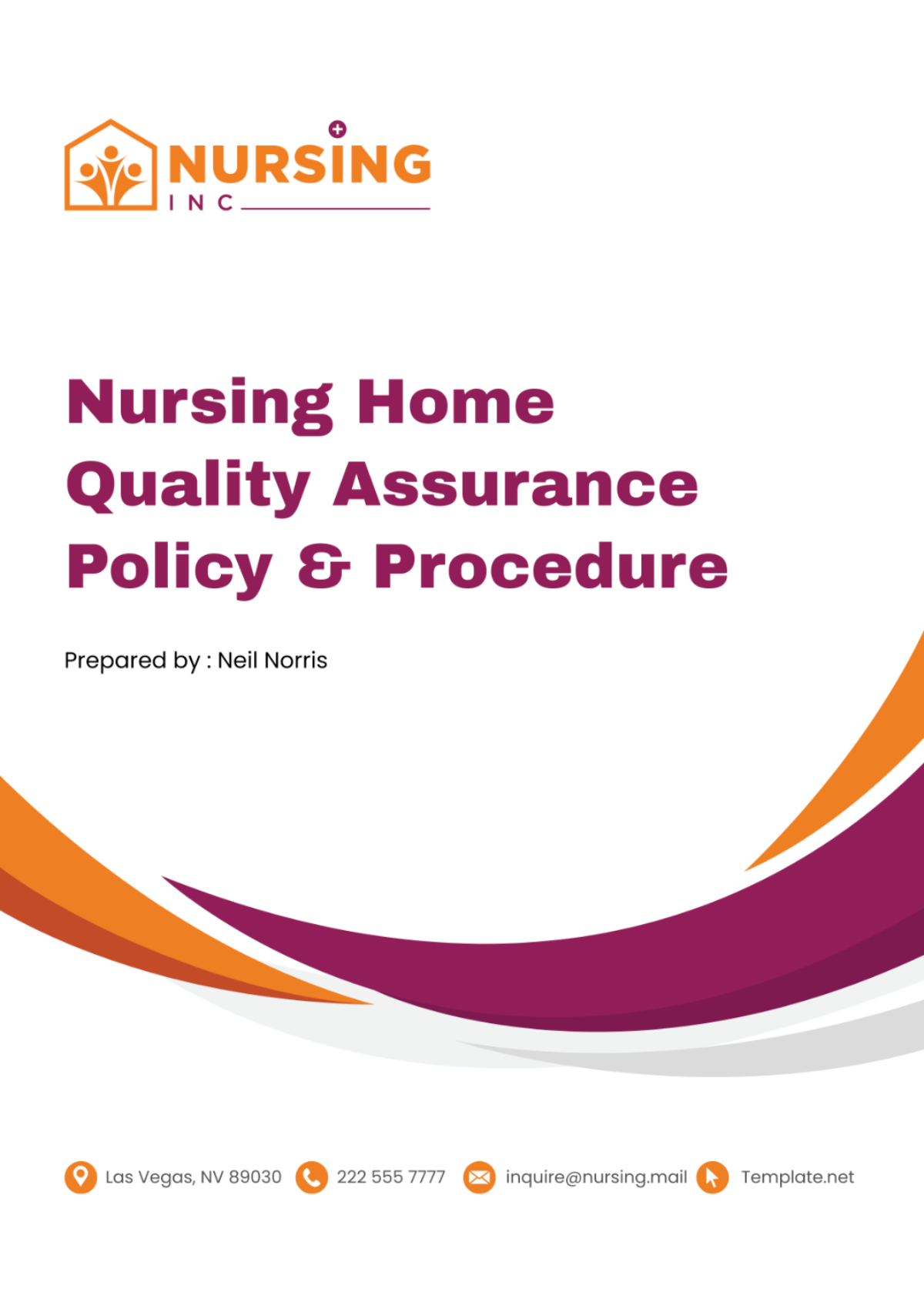
A. Purpose and Scope
The purpose of [Your Company Name] Quality Assurance Policy & Procedure is to establish a framework for maintaining and enhancing the quality of care and services provided to our residents. This policy outlines our commitment to upholding the highest standards of safety, effectiveness, and resident satisfaction. By implementing rigorous quality assurance measures, we aim to continuously improve the overall quality of life for those under our care.
This policy applies to all staff members, volunteers, and contractors involved in the delivery of care and services within [Your Company Name]. It encompasses all aspects of resident care, including clinical services, dietary needs, recreational activities, and environmental safety. Our quality assurance program is designed to promote accountability, transparency, and excellence in every facet of our operations, ensuring that residents receive compassionate, person-centered care at all times.
B. Quality Standards and Measures
Ensuring the highest quality of care and services is paramount at [Your Company Name]. Our commitment to excellence is reflected in the rigorous standards and measures outlined in this policy. By adhering to evidence-based practices and regulatory guidelines, we strive to provide a safe, compassionate, and enriching environment for all residents.
1. Clinical Care Standards
a. Medical Care: We adhere to evidence-based practices and guidelines established by reputable medical organizations such as the American Medical Association (AMA) and the Centers for Disease Control and Prevention (CDC).
Our medical care practices encompass comprehensive assessments, timely interventions, and continuity of care to optimize health outcomes for residents.
b. Nursing Care: Our nursing staff follows protocols outlined by the American Nurses Association (ANA) and the National Council of State Boards of Nursing (NCSBN) to deliver safe and effective nursing care.
Nursing care standards include medication management, wound care, infection control, and resident education to promote self-care and independence.
2. Safety Standards
a. Environmental Safety: We maintain a safe and hazard-free environment in compliance with Occupational Safety and Health Administration (OSHA) regulations and guidelines.
Regular inspections, emergency preparedness drills, and staff training ensure the prevention of accidents and injuries within our facility.
b. Infection Control: Our infection control measures align with recommendations from the Centers for Medicare & Medicaid Services (CMS) and the Centers for Disease Control and Prevention (CDC).
Protocols for hand hygiene, personal protective equipment (PPE) use, and environmental cleaning mitigate the risk of healthcare-associated infections (HAIs) among residents and staff.
3. Resident Satisfaction Measures
a. Surveys and Feedback: We regularly solicit feedback from residents and their families through satisfaction surveys and meetings to identify areas for improvement.
Action plans are developed based on survey results to address concerns and enhance the overall resident experience.
4. Staff Training Standards
a. Orientation and Ongoing Education: All staff members receive comprehensive orientation and ongoing training in accordance with regulations from state licensing boards and accrediting bodies.
Training topics include resident rights, abuse prevention, cultural competence, and emergency response to ensure staff competency and proficiency in their roles.
5. Other Relevant Areas
a. Nutritional Services: Our dietary department follows dietary guidelines set forth by the Academy of Nutrition and Dietetics to meet the nutritional needs and preferences of residents.
Menu planning, food safety practices, and individualized meal plans support residents' health and well-being.
b. Recreational Activities: Our recreational therapy programs adhere to standards outlined by the National Council for Therapeutic Recreation Certification (NCTRC) to promote physical, emotional, and social well-being among residents.
Diverse activities cater to residents' interests and abilities, fostering a sense of community and engagement within the facility.
C. Quality Assessment and Monitoring
At [Your Company Name], we are dedicated to continuously assessing and monitoring the quality of care to ensure the well-being of our residents. This section outlines our procedures for evaluating resident outcomes, conducting audits, and collecting data on performance indicators. Additionally, we implement a comprehensive Budgeting and Planning procedure to allocate resources effectively and support our quality assurance efforts.
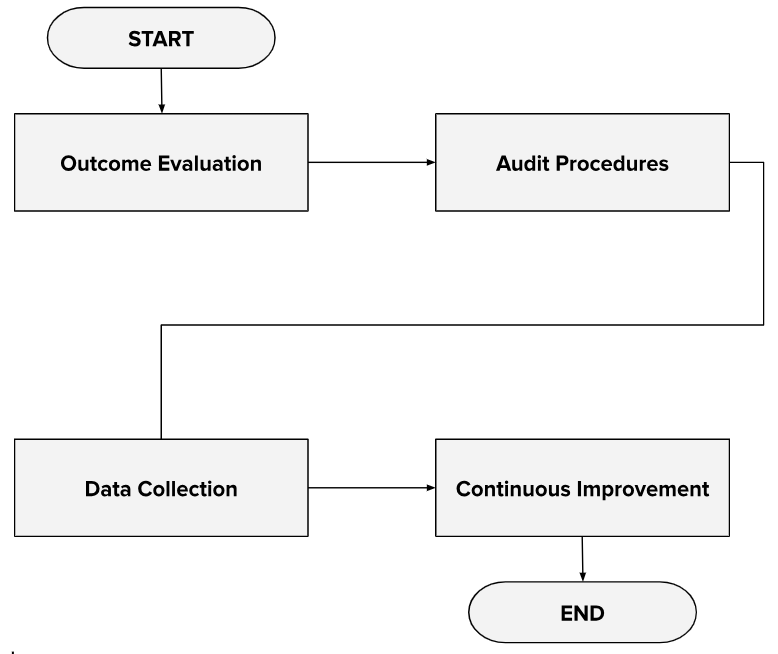
Quality Assessment and Monitoring Procedure:
Outcome Evaluation: Regularly assess resident outcomes, including health status, satisfaction levels, and quality of life indicators, to measure the effectiveness of care delivery.
Audit Procedures: Conduct comprehensive audits of clinical processes, documentation practices, and facility operations to identify areas of non-compliance or opportunities for enhancement.
Data Collection: Collect and analyze data on various performance indicators, such as medication errors, falls, and resident complaints, to track trends, identify patterns, and inform quality improvement initiatives.
Continuous Improvement: Utilize findings from assessments, audits, and data analysis to implement targeted interventions, revise policies and procedures, and foster a culture of continuous improvement among staff members.
D. Continuous Improvement Initiatives
Continuous improvement is fundamental to our commitment to excellence at [Your Company Name]. This section outlines our strategies and processes
for ongoing enhancement of care delivery and operational practices.
1. Quality Improvement Team
We establish a multidisciplinary Quality Improvement Team comprising representatives from various departments to spearhead continuous improvement efforts.
2. Root Cause Analysis
When adverse events or deficiencies occur, we conduct thorough root cause analyses to identify underlying causes and prevent recurrence.
3. Performance Metrics
We establish key performance indicators (KPIs) to measure the effectiveness of our quality improvement initiatives.
The dataset below tracks key performance metrics for a nursing home over twelve months. It includes data on falls, medication errors, and resident satisfaction levels. Each row represents a different month, while the corresponding values indicate the number of falls, medication errors, and the percentage of resident satisfaction. Analyzing this data can reveal trends and patterns in the nursing home's performance over time.
4. Staff Training and Engagement
We provide ongoing training and education opportunities to equip staff with the knowledge and skills needed to contribute to quality improvement efforts.
5. Resident and Family Involvement
We actively engage residents and their families in quality improvement initiatives, seeking their input and feedback to inform decision-making processes.
6. Benchmarking and Best Practices
We benchmark our performance against industry standards and best practices, seeking opportunities to learn from top-performing organizations.
Through these continuous improvement initiatives, we remain dedicated to exceeding expectations and continuously raising the bar for excellence in care delivery at [Your Company Name].
E. Staff Training and Competency
Ensuring that our staff possess the necessary skills and knowledge is vital for delivering exceptional care at [Your Nursing Home's Name]. This section outlines our commitment to staff training and competency, highlighting key areas of focus to enhance the quality of care provided to our residents. Below is a comprehensive list of our staff training and competency initiatives, designed to equip our team with the skills and expertise needed to meet the diverse needs of our residents.
Orientation Programs: Newly hired staff undergo thorough orientation programs to familiarize them with our facility's policies, procedures, and resident care protocols.
Ongoing Education: We provide continuous learning opportunities through workshops, seminars, and online courses to keep staff updated on best practices and emerging trends in healthcare.
Clinical Skills Development: Our training programs focus on enhancing clinical skills, including medication administration, wound care, infection control, and emergency response procedures.
Resident-Centered Care: Staff are trained in person-centered care principles, emphasizing empathy, dignity, and respect in all interactions with residents.
Cultural Competency Training: We promote cultural awareness and sensitivity among staff to ensure culturally competent care for residents from diverse backgrounds.
Abuse Prevention: Training modules on recognizing and preventing elder abuse and neglect empower staff to safeguard residents' well-being.
Communication Skills: Effective communication training equips staff with the ability to communicate clearly and compassionately with residents, families, and colleagues.
Performance Evaluations: Regular performance evaluations provide feedback and identify areas for further training and professional development.
Specialized Training: Staff members receive specialized training in areas such as dementia care, palliative care, and behavioral management to address the unique needs of certain resident populations.
Regulatory Compliance: Training on state and federal regulations ensures staff compliance with legal requirements and promotes a culture of accountability within the facility.
F. Communication and Reporting
Effective communication and transparent reporting are fundamental to our quality assurance efforts at [Your Nursing Home's Name]. This section delineates the communication channels and reporting mechanisms employed to ensure timely dissemination of information related to incidents, complaints, and feedback.
1. Incident Reporting
Procedure ↓ Investigation ↓ Documentation |
a. Procedure: Staff are required to promptly report any incidents to their immediate supervisor or manager.
b. Investigation: Supervisors or managers investigate reported incidents thoroughly to determine root causes and appropriate actions.
c. Documentation: All incidents, whether minor or serious, are documented in an incident log for record-keeping and analysis.
2. Complaint Management
Submission ↓ Review Process ↓ Resolution |
a. Submission: Residents, families, or staff may submit complaints through designated channels, such as suggestion boxes or complaint forms.
b. Review Process: Complaints are reviewed and addressed by the appropriate department or management team in a timely manner.
c. Resolution: Efforts are made to resolve complaints satisfactorily, with follow-up communication provided to the complainant.
3. Feedback Mechanisms
Open Door Policy: Staff are encouraged to provide feedback and suggestions for improvement through open communication with management.
Resident and Family Surveys: Regular surveys are conducted to gather feedback on satisfaction levels and areas for improvement.
Staff Meetings: Feedback from staff meetings is collected and discussed to identify opportunities for enhancement.
4. Reporting and Analysis
Regular Reporting: Incidents, complaints, and feedback are compiled into periodic reports for review by management and quality improvement teams.
Analysis: Data from reports are analyzed to identify trends, patterns, and areas for targeted interventions and improvement initiatives.
5. Follow-Up and Action Plans
Corrective Actions: Action plans are developed based on findings from incident reports, complaints, and feedback to address identified issues.
Preventive Measures: Proactive measures are implemented to prevent recurrence of incidents and complaints, promoting continuous improvement.
By fostering a culture of transparency and accountability through effective communication and reporting, we uphold our commitment to providing safe and high-quality care to our residents.
G. Compliance and Regulatory Requirements
Ensuring compliance with relevant regulations, standards, and accreditation requirements is paramount for [Your Nursing Home's Name] to operate ethically and legally while maintaining licensure and accreditation status. This section provides an overview of the various aspects of compliance.
1. Licensure and Certification
[Your Company Name] diligently maintains all necessary licenses and certifications mandated by state and federal regulatory agencies to operate legally and ensure the provision of quality care.
2. Accreditation Standards
We adhere strictly to the rigorous standards set by respected accrediting bodies such as The Joint Commission (TJC) and the Commission on Accreditation of Rehabilitation Facilities (CARF) to uphold excellence in care delivery.
3. Federal Regulations
Compliance with federal regulations outlined by prominent agencies such as the Centers for Medicare & Medicaid Services (CMS) and the Occupational Safety and Health Administration (OSHA) is meticulously observed to safeguard the well-being of our residents and staff.
4. State Regulations
[Your Company Name] dutifully follows state-specific regulations governing nursing home operations, staffing ratios, resident rights, and safety standards to ensure compliance with local legal requirements.
5. Ethical Guidelines
Upholding ethical principles and standards of conduct outlined by esteemed professional organizations such as the American Health Care Association (AHCA) and the National Association of Long Term Care Administrator Boards (NAB) is of utmost importance.
By meticulously adhering to these compliance and regulatory requirements, [Your Nursing Home's Name] demonstrates its unwavering commitment to providing safe, effective, and ethical care to our residents while preserving licensure and accreditation status.
- 100% Customizable, free editor
- Access 1 Million+ Templates, photo’s & graphics
- Download or share as a template
- Click and replace photos, graphics, text, backgrounds
- Resize, crop, AI write & more
- Access advanced editor
Ensure excellence in care with the Nursing Home Quality Assurance Policy & Procedure Template from Template.net. This editable and customizable template establishes standards and processes for continuous quality improvement, monitoring, and evaluation in your nursing home. Editable in our Ai Editor Tool, it's crucial for maintaining high care standards, enhancing resident satisfaction, and meeting regulatory requirements, fostering a culture of excellence and accountability.
You may also like
- HR Policy
- Restaurant Policy
- Company Policy
- Accounting Policies and Procedures
- Website Policy
- Privacy Policy
- Safety Policy
- School Policy
- IT and Software Policy
- Law Firm Policy
- Construction Policy
- Interior Design Policy
- Travel Agency Policy
- Education Academic Policy
- Security Policy
- Real Estate Policy
- Expense Policy
- Software Policy
